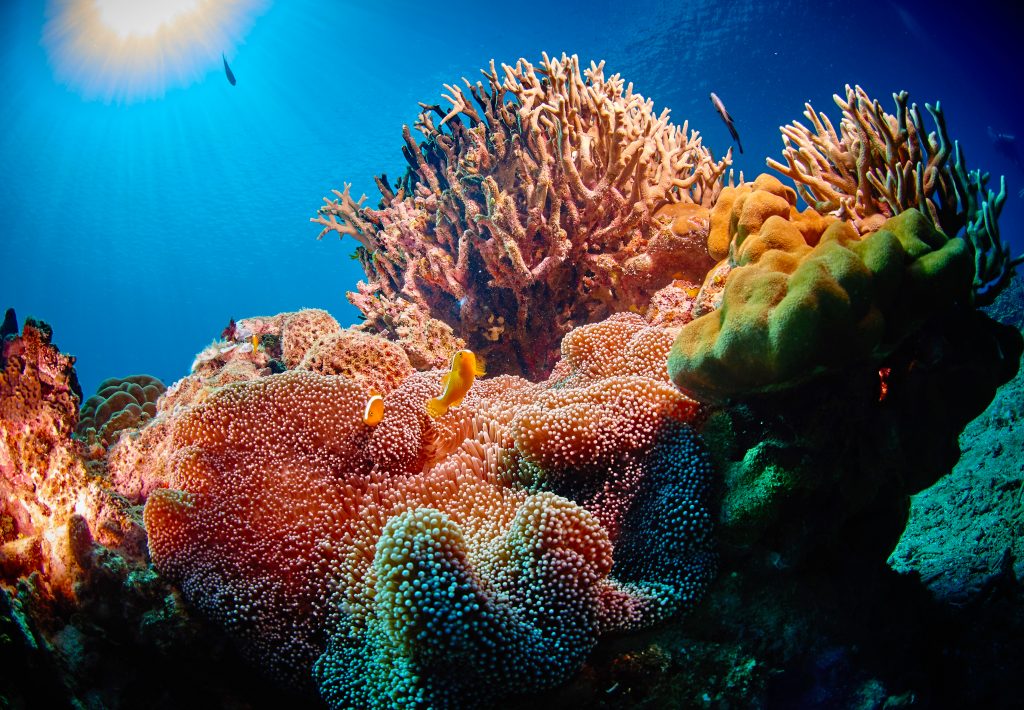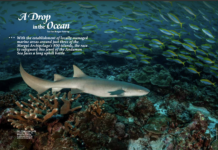
Embracing the importance of marine conservation and eco-tourism
By Glenn Yong
Located within the northwestern islands off the Philippine province of Northern Samar, the Biri Islands are home to a small fishing village plagued by a history of illegal ornamental fish trade, massive shark finning operations, and the occasional dynamite and cyanide fishing by the local fishermen.
However, through the years, increased efforts of the villagers and the government have seen this small, sleepy fishing village slowly transform itself into a destination for conservationists, budding marine biologists, weekend tourists and explorers from foreign lands.
Taking a short one-hour domestic flight from Manila International airport and an hour’s drive to the Northern Samar Port, one can board a small bangka, a fishing vessel that provides the principal sea transport here, from Northern Samar to Biri. You pass some interesting sights on your way there, from huge Christian monuments to large mangrove forests surrounded by crystal-clear deep blue waters.

It is obvious that the village understands the importance of conservation. Printed posters throughout the village discourage the use of cyanide and dynamite fishing while the planting of new mangroves in the area aims to prevent soil erosion during the annual monsoon season – and the frequent onslaughts of typhoons.
Homes have slowly improved and secured with concrete through the support and aid of local NGOs, and they now have access to electricity and fresh water from wells, not to mention various “extras” such as soft drinks and cable television.
Breathtaking sights forged through time
The Biri Islands are traditionally famous for their natural rock formations, and the locals from Manila and throughout the country visit the island to marvel at these majestic structures. That feeling you have while in the presence of such formidable formations is just not something words can easily describe – the beauty and power of the waves crashing on the rocks, the strong surface winds, and ocean breeze surging across the entire landscape. For once, time stands still, as
you are mesmerised for hours by this amazing sight.
The islands lie at the perimeter of the Pacific Ocean, and this comes at a cost of being in the frontline of powerful typhoons, yet juxtaposed against the beauty of crystal-clear waters and incomparable reefs. Underexplored even by local divers, most of the dive sites here are unnamed or untagged. Knowledge comes from the experience of dive guides who were once fishermen themselves.
The reefs are thriving, with large reefs and coral outcrops, and occasional visits by large wild tuna, sharks and mantas during the May-to-June season. The waters around the Biri Islands have been declared a marine sanctuary by the local government years ago to encourage eco-tourism and sustainable fishing within the community.

These islands do not see more than an estimated 100 tourists a year, and although their facilities fall short of those on Boracay or Cebu, they boast a few local resorts that can cater for urban escapists and beach seekers, complete with air-conditioning and fresh water pumped up to the rooms. This is truly a destination where you can experience island life like a local: No inflated prices for food and snacks or even the local motorbike rides to various parts of the village.
The power comes on at noon and ends at midnight, with everything else running on either batteries or generators. Guests who require electricity after 12am have to pay for fuel to power the generators – a reminder of what city folks take for granted and the environmental consequences of our conveniences. It is fascinating to see how local people work around the 12 hours of electricity they have.
Biri offers not just scenic sights on land and underwater, but also a life-changing experience, where you enjoy the simple pleasures of fresh water, fresh air, and crystal-clear waters. The friendly locals are curious about where you are from, and despite their limited command of the English language, they will try hard to understand you, and teach you a little about local customs and traditions.
With fish stocks having declined precipitously over the last few years due to overfishing and non-sustainable fishing practices, the people here appreciate how much tourism is helping them to improve their lives.
For more stories and photos, check out Asian Geographic Issue 114.










